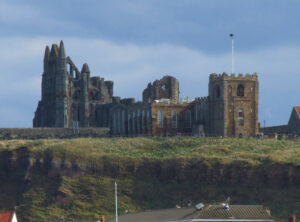
Just below the Abbey and the last stop before leaving the Eastern Headland, there’s a squat church founded by monks from Whitby Abbey in about 1100.
Most of the present interior dates from the 18th century, including heat derived from a cast-iron coal burning stove, and candle light from wall sconces and a bronze chandelier.
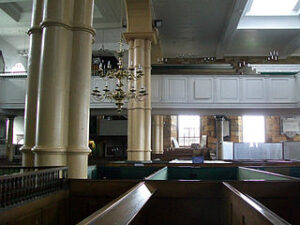
The original box pews remain in their places. The largest of these, and nearest the altar, is the Cholmley pew which not only blocks the view of the altar, but has an outside entrance so the Cholmleys could keep their distance from ordinary folk. Church members purchased their pews, providing needed funds for the church. Pews nearest the pulpit are larger with cushioned seats. Smaller pews with plain seats are further away. At the time, there were also pews set aside for the poor and for strangers.
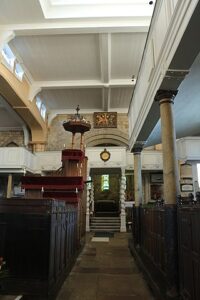
The minister gave his sermon from the top of a three level pulpit which allowed him to see the entire congregation, except, possibly, the Cholmleys.
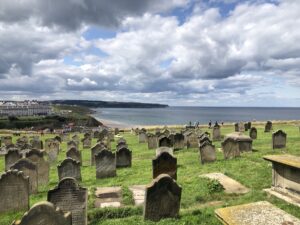
The church is surrounded by a graveyard with weathered headstones dating into the 19th century when the graveyard closed to new occupants. There were two routes to get the coffins up from the town below. Wealthier families could load the coffin on a wagon and drive it up Green Lane. Those who couldn’t afford a carriage, or thought it was more impressive to use the 199 steps from Church Street to the church, engaged pall bearers to carry the coffin. While make the track up and down the steps, tourists welcome intermittent wooden planks. Their original purpose was the allow pall bearers to set down the coffin while they caught their breath.
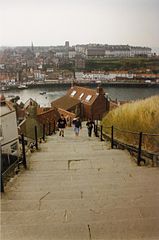
The first steps were wooden, which probably required frequent replacement. In 1774 stone steps, now worn smooth, replaced them. In addition to Green Lane, there is a proper road that goes to the parking area in front of the Abbey. From there it’s a short stroll to the church which I suspect the road greatly improves attendance at St. Mary’s.
Erosion on the headland creates land slips that began occurring in 2012. Graves have slipped, and deposited human remains on the street below the graveyard.
Near the steps, but inside the churchyard is a large cross known as Cadmon’s Cross. In the 7th century, Cadmon was a cowherd who composed a hymn now accepted as the earliest piece of Anglo-Saxon literature. Abbess Hild encouraged Cadmon to continue his compositions.
In 1897 there was a collection to create the present 20-foot cross as a monument to Cadmon’s contribution to sacred literature in English. Participants collected £250 and engaged a sculptor. The cross features the Four Evangelists and the Lamb representing Christ. The plinth supporting the cross depicts Christ, King David, Abbess Hild, and the poet Cadmon.
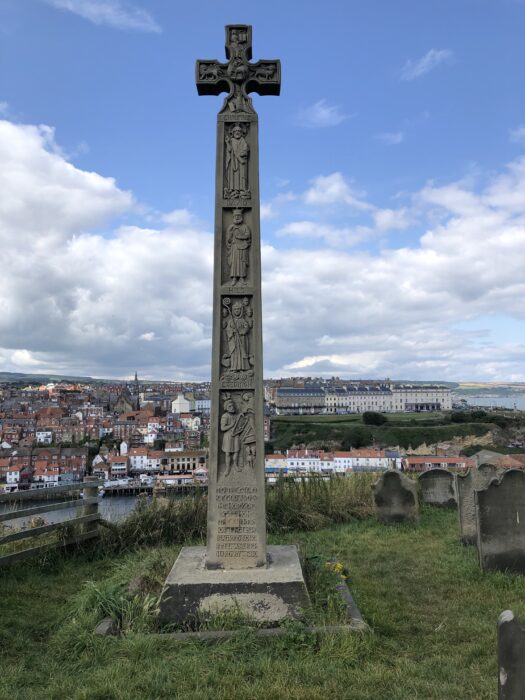
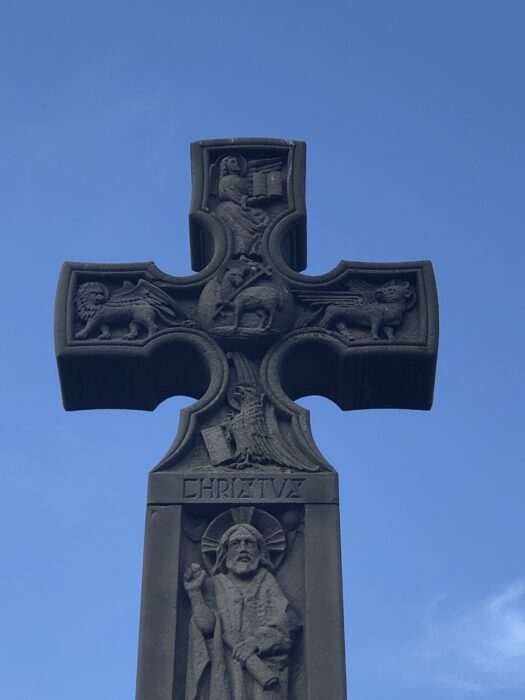
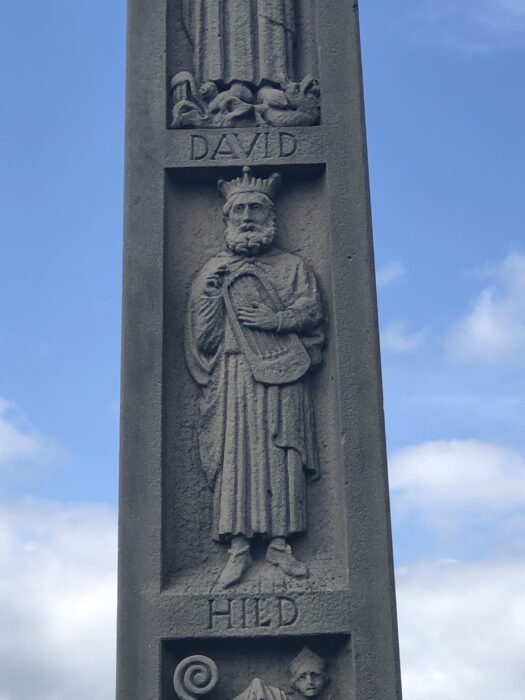
King David 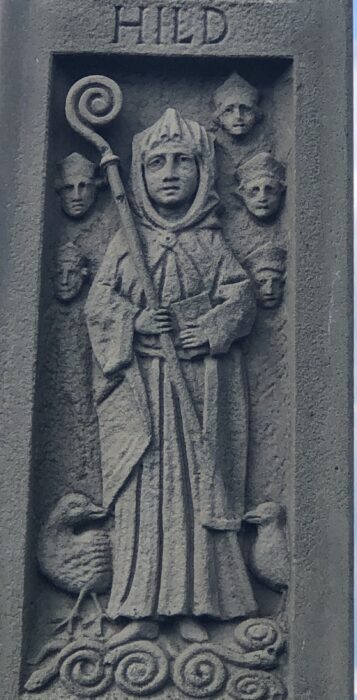
Abbess Hild 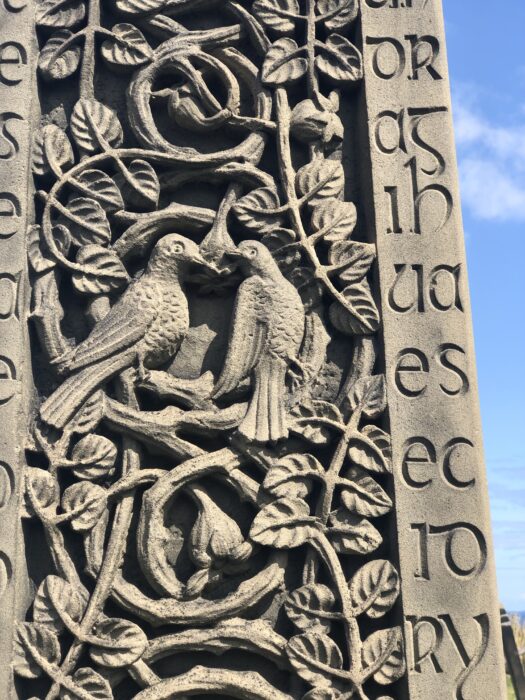
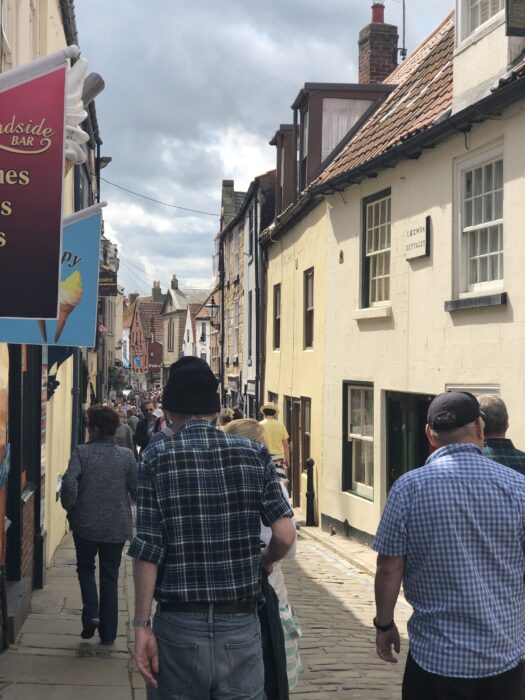
Church Street intersects with the bottom of the steps. The narrow streets once housed families of fishermen, and were known as a quick way for smugglers to make themselves scarce. Having reached the town, its time to cross the river.
The present 75-foot “swing bridge” across the River Esk was built in 1908 and can swing horizontally to allow boats to pass underneath, connecting the upper and lower harbor.
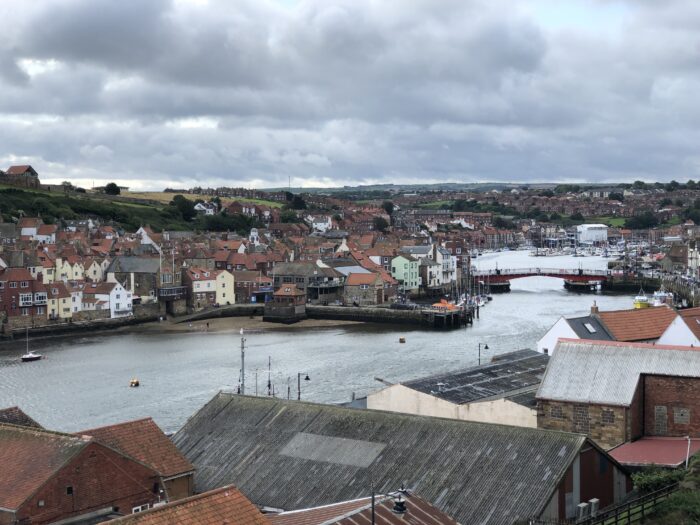
In addition to working boats, there are any number of pleasure crafts available to take passengers a short way out to sea to view Whitby’s shore. I took one of these, both because it was a nice day, and also to get a sense of how the area might have looked to those early Anglo-Saxon settlers.
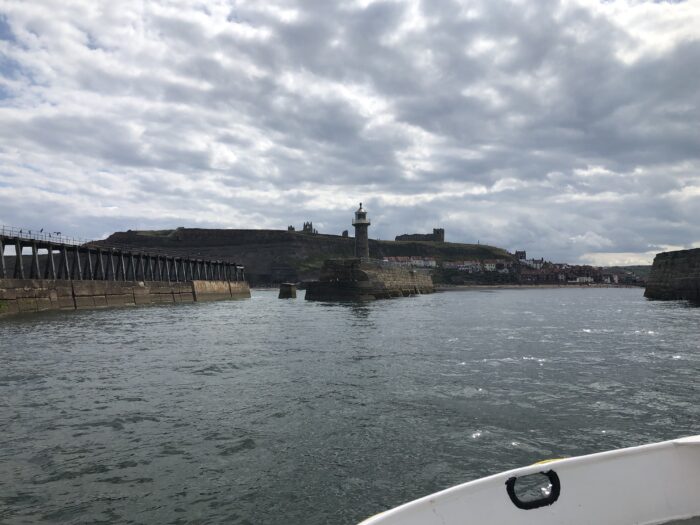
Strange to think that at one time, the town was at sea level. The present difference between the height of the headland and sea level is a dramatic example of how much erosion can be caused by waves.
🐟🐟🐟
St. Mary’s Church with Abbey in background by Keith Laverack.
Interior of St. Mary’s Church by minkey8885.
Interior St. Mary’s Church by Agnete.
199 Steps by Bob Embleton.
All Other Photos by Author.
St. Mary’s Church. English Churches.

Sandra Wagner-Wright holds the doctoral degree in history and taught women’s and global history at the University of Hawai`i. Sandra travels for her research, most recently to Salem, Massachusetts, the setting of her new Salem Stories series. She also enjoys traveling for new experiences. Recent trips include Antarctica and a river cruise on the Rhine from Amsterdam to Basel.
Sandra particularly likes writing about strong women who make a difference. She lives in Hilo, Hawai`i with her family and writes a blog relating to history, travel, and the idiosyncrasies of life.

